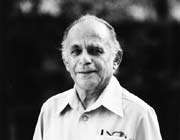Early literature (part2)
This article is divided into three parts. Giving a brief detail of Persian history:
1. The Persian Language
2. Early Literature
3. The Thirteenth Century as a New Chapter for Literature
The Thirteenth Century as a New Chapter for Literature
The Thirteenth century produced two poetic geniuses of the first rank, Saadi and Rumi. It is also particularly notable for histories, of which many were inspired by these singularly troubled times.
Hamdullah Mostofi produced notable works both of history and geography, as well as an epic, the Zafar Nameh or Book of Victory, in 75,000 couplets, and Nasir ud-Din Tusi wrote on philosophy and logic. Three notable poets of the period are Iraqi, author of the mystical Lama"at or Flashes; Amir Khosrow, known as ‘The Parrot of India’ and author of no less than five divans, and Zakani the satirist.
Foremost in the ranks of historical works are Juvaini"s Tarikh-e Jahan Gusha, an account of the Mongol conquests; the history of Juzjani, an important source book for the history of Moslem India; Rashid ud-Din"s great Jame ot-Tawarikh or Universal History, and the History of Vassaf. The style of the period tended to over-ornateness; Juvaini, according to Arberry, was ‘the most accomplished exponent of the prized art of verbal arabesque’, while Vassaf ‘modeled his style on Juvaini at his most intricate and verbose.’ Of the writings of this school Levy remarks that it was ‘so filled with metaphor, allusion, and assonance, that the meaning was often lost in a tangle of verbiage’. By contrast, the work of the conscientious Rashid ud-Din, considered by Browne to be the best of all the Persian historians, is a model of clarity.
The Fifteenth Century onwards
The fifteenth century produced a number of notable historians -Nizam od-Din Shami, author of the Zafar Nameh (a history of Timur); Yazdi, who wrote a work of the same name; Hafiz-e Abru, Khafi, Dowlatshah and Mir Khand, author of the immense Rozat as-Safa or Garden of Purity.
Other prose writers of note , include Davvani, author of the Akhlaq-e Jalali, and Kashefi, who produced an elaborate prose paraphrase of Kalila va Dimna known as Anvar-e Suhaili (The Lights of Canopus). Fifteenth century poets include the Sufis Maghribi and Qasim-e Anvar, Katibi, the saintly Ni"mat Allah Vali, and Jami.
Jami, ‘universally regarded as the last eminent figure in the history of classical Persian literature’ (Arberry) was born in 1414. A man of considerable erudition as well as of poetic genius, Jami produced some forty-five works, of which the best known are the Baharistan, the Divan, and the Haft Aurang or Seven Thrones, a series of four didactic works and three romances (Salaman o Absal, Yosef o Zoleikha and Laila o Majnoun) which he intended to rival the work of Nizami.
After Jami, who died shortly before the rise of the Safavis, Persian poetry is generally considered to have fallen into decline. There were indeed no poets of the very first rank after the fifteenth century, yet in this long period there was no lack of writers and poets of talent, some of them of great eminence.
Of the poets immediately following Jami, his nephew Hatif was a noted writer of romantic and historical epics; also famous were his pupils Asafi, Fighani (who earned himself the title of ‘The Little Hafiz’), Ahli and the Sufi poet Hilali. Later in the sixteenth century came the poets Hayrati, Kasimi, Kashi the panegyrist, Shani, Fasihi and Shafai.
Saeb (born 1677), the greatest literary figure of the seventeenth century, is considered by some to be the best Persian poet after Jami. In early life he spent some time in India as court poet to the Moghul emperor Shah Jahan, and returned to Iran to become poet laureate to Shah Abbas II. Saeb was a vivid and original poet who infused fresh life into the old forms and founded a new school. Also of note was his contemporary Fayyaz. A famous prose writer of the eighteenth century was Azar, author of the Atesh Kadeh (a biographical dictionary containing the lives of over 800 poets) as well as of a divan and a romantic epic. The prolific writer Hazin produced histories and an autobiography, as well as four divans. Also worthy of note is the poet Nejat.
In the nineteenth century Saba, poet laureate to Fath Ali Shah, composed a divan and an epic called the Shahanshahnameh; as a poet he was excelled by Neshat, also author of a divan.
Qaani (died 1853), the best writer of the nineteenth century and perhaps the most outstanding since Jami, was one of the Iran"s most brilliant and melodious poets.
Well-known prose works of the period include Nasir ud-Din Shah"s diaries of his three journeys to Europe and the literary biographies of the poet Reza Quli Khan. This period was marked by the increasing influence of European literature, noticeable in the works of the poet Shaybani and others.
The real revival of Persian letters came in the early twentieth century, when the growing desire for reform inspired numerous satires. One of the most outstanding figures of this period was Iraj Mirza (died 1926), a poet of great talent and champion of the emancipation of women. Other noted poets were Adib, Bahar, Lahuti, Shahryar, Aref and the poetess Parvin Etesami. Poets of more recent decades include Nima Yoshij, Ra"di, Khanlari, Islami, Gulchin, Ahmad Shamlou, Mehdi Akhavan Sales, Masud Farzad, Sohrab Sepehri, Fereidoon Moshiri and the poetess Forough Farrokhzad. Some of these poets have introduced verse forms new to Persian literature. Here should not be forgotten the great works of Sadeq Hedayat, Samad Behrangi, Sadeq Choubak and many others who enriched the persian literature.

Other links:
History of Persian Calligraphy
History of Ta"zieh in Iran
History of Tragedy
History of Tile in Iran
Brief History of Islamic Art
Islamic art and architecture
History of Comedy
Abstract Expressionism